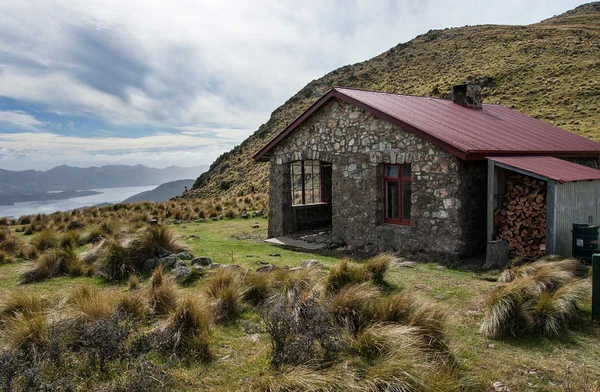Packhorse Hut

Situated on a low open saddle on the ridge between Mt Bradley and the Remarkable Dykes, the stone hut can be seen against the skyline from many parts of the reserve and the Lyttelton Harbour basin.
Facilities
- Porch
- Lounge with a stove (firewood supplied)
- Sleeping room
- Tank water which should be treated or boiled before drinking
- Sealed vault toilet nearby
Heritage
This hut was planned as part of a series of rest houses built by Harry Ell for a proposed summit route from Christchurch to Akaroa. Only four houses were ever built, all in local stone, including the grand ‘Sign of the Takahe’. The Sign of the Packhorse, Sign of the Bellbird (1914) and Sign of the Kiwi (1917) were designed by Samuel Hurst Seager, one of the earliest architects to move away from historical styles and seek designs and plans with New Zealand character.
As the houses were built of stone Seager was able to blend the houses into and harmonise them with the surrounding landscape. During construction, materials were delivered to the Parkinson homestead in Kaituna Valley and then taken to the pass by a sledge towed by a team of six bullocks. It was originally thought the rest house had been built on land donated by William A. Gray, later it was discovered to be on freehold land held by Cyril and Ivor Gray. They agreed to gift 1434 square metres to add to the scenic reserve and secure the rest house onto public land.
The hut is built of locally quarried volcanic stone with timber joinery – windows on three elevations – affording remarkable views of the Scenic Reserve, Mount Bradley, Lyttelton Harbour and the Southern Alps in the distant west.
Situated on a low saddle on the ridge between Mt Bradley and the Remarkable Dykes, the stone hut can be seen against the skyline from many parts of the reserve and the Lyttelton Harbour basin.
The hut has regional importance for the development of tourism, and in particular the opening up of Banks Peninsula, the doorstep of Christchurch.
